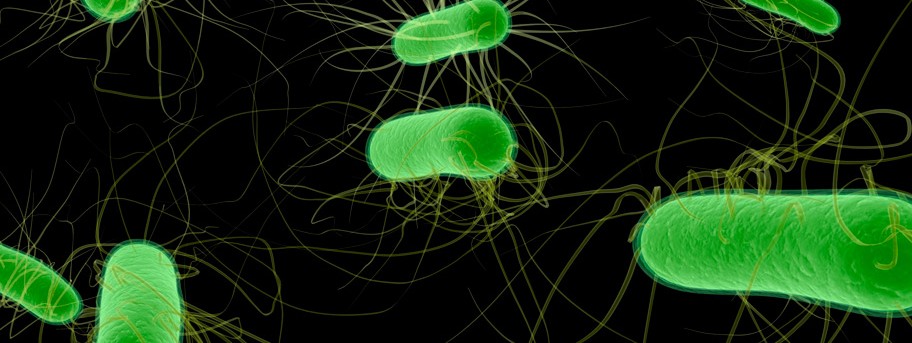The University of Nottingham
 Exchange online
Exchange online
Research Exchange
Harnessing the power of killer bacteria

Scientists have discovered new clues about a potential weapon in the fight against a dangerous superbug which is becoming increasingly resistant to usual forms of treatment.
Strains of the bacteria Escherichia coli now account for more hospital-acquired infections than both MRSA and Clostridium difficile put together and are extremely difficult to treat with conventional antibiotics.
This latest research published in the Journal of Biological Chemistry has shed new light on how bacteria use ‘bacteriocins’, (substances that kill other strains of bacteria) to enter the bacterial cell and kill it, and how one bacteriocin produced by E. coli, ‘colicin A’, could be targeted to another cell protein (TolA) to create a new ‘Trojan horse’ weapon to ultimately kill the bacterial cell from within.
Bug on bug warfare
Leading the research, Dr Christopher Penfold, from the University’s Centre for Biomolecular Sciences, said:
“Bacteriocins are receiving a lot of interest currently for their potential use in probiotics, cancer therapies, food security and new antimicrobial techniques. As current antibiotic treatments to fight superbugs are increasingly proving ineffective, it could be that harnessing the toxic power of bugs to fight rival bugs is going to be the way forward.
“Our research has specifically provided structural evidence that colicin A inE.coli binds to a novel binding site of the protein (TolA) which is present naturally and crucial to the health of a bacterial cell. This is significant because it could lead to potential antimicrobial therapies through the design of small novel synthetic compounds that could ultimately block the natural functions of TolA leading to cell death and the eradication of the infection.”
The researchers found that although colicins have good antimicrobial activity it is difficult to envisage using them as potential new antibiotics because they are large protein molecules that would activate the body’s immune response to provide protection on the next occasion the colicin is used for treatment.
How molecules penetrate cell defences
This new research into the physical interaction of colicins with components of a bacterial cell is vital to the understanding of how molecules can gain access and penetrate the defences of a bacterial cell. The research data shows that the interacting region of colicin A with TolA consists of a relatively small surface area whose bindingregion highlights essential molecular interactions that stabilise the interacting complex. This may provide important information for the design of novel synthetic substrates that could bind to and disable the essential functions of TolA leading to a loss of cellular functions associated with this protein and ultimately cell death.
Bacteria experts in conference at Nottingham
The E.coli ‘colicin A’ research will be one of the latest breakthroughs in this field of medical science under discussion at a Biochemical Society conference at The University of Nottingham in July. ‘How bugs kill bugs: progress and challenges in bacteriocin research’ will bring together experts in microbial ecology, cell biology, structural biology and molecular biophysics to explore the role played by bacteriocins in intermicrobial competition, the molecular mechanisms by which bacteriocins penetrate the formidable defences of bacteria and how bacteriocin import has yielded novel insights into the organization and structural biochemistry of the bacterial cell.
Leave a Reply
Other

Top prize for quantum physicist
A University of Nottingham physicist has won a prestigious medal from the Institute of Physics for […]

Zero carbon HOUSE designed and built by students comes home
Design and construct a low cost, zero carbon, family starter home, transport it to Spain, build […]